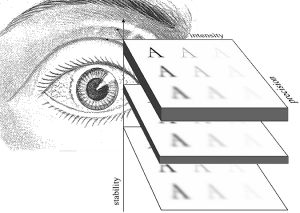 Is awareness an on/off thing? Or is it on a sort of dimmer switch? A degree of variation seems to be indicated by the peculiar vagueness of some metal content (or is that just me?). Fazekas and Overgaard argue that even a dimmer switch is far too simple; they suggest that there are at least four ways in which awareness can be graduated.
Is awareness an on/off thing? Or is it on a sort of dimmer switch? A degree of variation seems to be indicated by the peculiar vagueness of some metal content (or is that just me?). Fazekas and Overgaard argue that even a dimmer switch is far too simple; they suggest that there are at least four ways in which awareness can be graduated.
First, interestingly, we can be aware of things to different degrees on different levels. Our visual system identifies dark and light, then at a higher level identifies edges, at a higher level again sees three dimensional shapes, and higher again, particular objects. We don’t have to be equally clear at all levels, though. If we’re looking at the dog, for example, we may be aware that in the background is the cat, and a chair; but we are not distinctly aware of the cat’s whiskers or the pattern on the back of the chair. We have only a high-level awareness of cat and chair. It can work the other way, too; people who suffer from face-blindness, for example, may be well able to describe the nose and other features of someone presented to them without recognising that the face belongs to a friend.
That is certainly not the only way our awareness can vary, though; it can also be of higher or lower quality. That gives us a nice two-dimensional array of possible vagueness; job done? Well no, because Fazekas and Overgaard think quality varies in at least three ways.
- Intensity
- Precision
- Temporal Stability
So in fact we have a matrix of vagueness which has four dimensions, or perhaps I should say three plus one.
The authors are scrupulous about explaining how intensity, precision, and temporal stability probably relate to neuronal activity, and they are quite convincing; if anything I should have liked a bit more discussion of the phenomenal aspects – what are some of these states of partially-degraded awareness actually like?
What they do discuss is what mechanism governs or produces their three quality factors. Intensity, they think, comes from the allocation of attention. When we really focus on something, more neuronal resources are pulled in and the result is in effect to turn up the volume of the experience a bit.
Precision is also connected with attention; paying attention to a feature produces sharpening and our awareness becomes less generic (so instead of merely seeing something is red, we can tell whether it is magenta or crimson, and so on). This is fair enough, but it does raise a small worry as to whether intensity and precision are really all that distinct. Mightn’t it just be that enhancing the intensity of a particular aspect of our awareness makes it more distinct and so increases precision? The authors acknowledge some linkage.
Temporal stability is another matter. Remember we’re not talking here about whether the stimulus itself is brief or sustained but whether our awareness is constant. This kind of stability, the authors say, is a feature of conscious experience rather than unconscious responses and depends on recurrence and feedback loops.
Is there a distinct mechanism underlying our different levels of awareness? The authors think not; they reckon that it is simply a matter of what quality of awareness we have on each level (I suppose we have to allow for the possibility if not the certainty that some levels will be not just poor quality but actually absent. I don’t think I’m typically aware of all possible levels of interpretation when considering something.
So there is the model in all its glory; but beware; there are folks around who argue that in fact awareness is actually not like this, but in at least some cases is an on/off matter. Some experiments by Asplund were based on the fact that if a subject is presented with two stimuli in quick succession, the second is missed. As the gap increases, we reach a point where the second stimulus can be reported; but subjects don’t see it gradually emerging as the interval grows; rather With one gap it’s not there, while With a slightly larger one, it is.
Fazekas and Overgaard argue that Asplund failed to appreciate the full complexity of the graduation that goes on; his case focuses too narrowly on precision alone. In that respect there may be a sharp change, but in terms of intensity or temporal stability, and hence in terms of awareness overall, they think there would be graduation.
A second rival theory which the authors call the ‘levels of processing view’ or LPV, suggests that while awareness of low-level items is graduated, at a high level you’re either aware or not. These experiments used colours to represent low-level features and numbers for high level ones, and found that while there was graduated awareness of the former, with the latter you either got the number or you didn’t.
Fazekas and Overgaard argue that this is because colours and numbers are not really suitable for this kind of comparison. Red and blue are on a continuous scale and one can morph gradually into the other; the numeral ‘7’ does not gradually change into ‘9’. This line of argument made sense to me, but on reflection caused me some problems. If it is true that numerals are just distinct in this way, that seems to me to concede a point that makes the LPV case seem intuitively appealing; in some circumstances things just are on/off. It seemed true at first sight that numerals are distinct in this way, but when I thought back to experiences in the optician’s chair, I could remember cases where the letter I was trying to read seemed genuinely indeterminate between two or even more alternatives. Now though, if My first thought was wrong and numerals are not in fact inherently distinct in this way, that seems to undercut Fazekas and Overgaard’s counter-argument.
On the whole the more complex model seems to provide better explanatory resources and I find it broadly convincing, but I wonder whether a reasonable compromise couldn’t be devised, allowing that for certain experiences there may be a relatively sharp change of awareness, with only marginal graduation? Probably I have come up with a vague and poorly graduated conclusion…

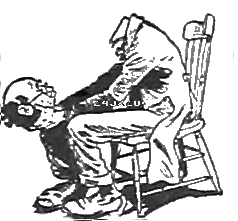 We don’t know what we think, according to Alex Rosenberg in the NYT. It’s a piece of two halves, in my opinion; he starts with a pretty fair summary of the sceptical case. It has often been held that we have privileged knowledge of our own thoughts and feelings, and indeed of our own decisions; but the findings of Benjamin Libet about decisions being made before we are aware of them; the phenomenon of blindsight which shows we may go on having visual knowledge we’re not aware of; and many other cases where it can be shown that motives are confabulated and mental content is inaccessible to our conscious, reporting mind; these all go to show that things are much more complex than we might have thought, and that our thoughts are not, as it were, self-illuminating. Rosenberg plausibly suggests that we use on ourselves the kind of tools we use to work out what other people are thinking; but then he seems to make a radical leap to the conclusion that there is nothing else going on.
We don’t know what we think, according to Alex Rosenberg in the NYT. It’s a piece of two halves, in my opinion; he starts with a pretty fair summary of the sceptical case. It has often been held that we have privileged knowledge of our own thoughts and feelings, and indeed of our own decisions; but the findings of Benjamin Libet about decisions being made before we are aware of them; the phenomenon of blindsight which shows we may go on having visual knowledge we’re not aware of; and many other cases where it can be shown that motives are confabulated and mental content is inaccessible to our conscious, reporting mind; these all go to show that things are much more complex than we might have thought, and that our thoughts are not, as it were, self-illuminating. Rosenberg plausibly suggests that we use on ourselves the kind of tools we use to work out what other people are thinking; but then he seems to make a radical leap to the conclusion that there is nothing else going on.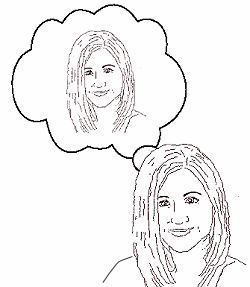
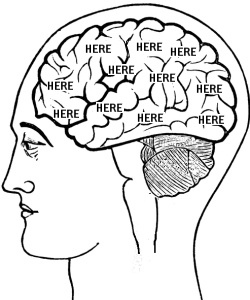
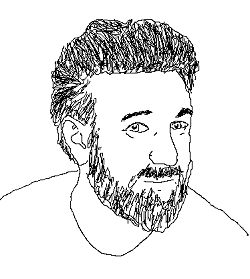
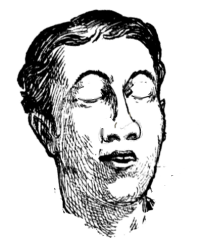
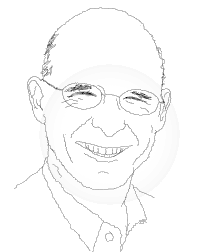 Edge has an interesting
Edge has an interesting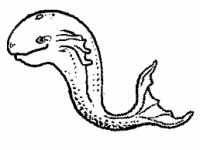 … it’s AGI now. I was interested to hear via
… it’s AGI now. I was interested to hear via